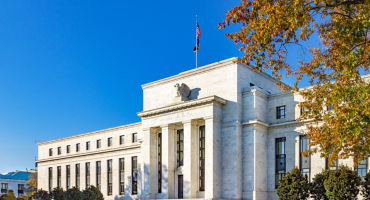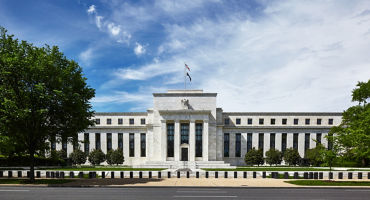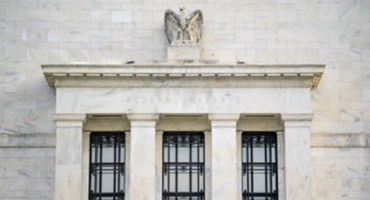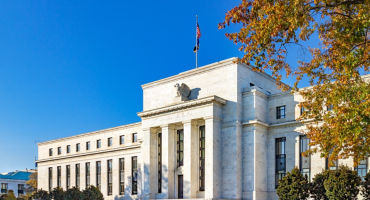- Portfolio Manager
Skip to main content
- Funds
- Insights
- Capabilities
- About Us
- My Account
The views expressed are those of the author at the time of writing. Other teams may hold different views and make different investment decisions. The value of your investment may become worth more or less than at the time of original investment. While any third-party data used is considered reliable, its accuracy is not guaranteed. For professional, institutional, or accredited investors only.
Year-over-year (y/y) US headline Consumer Price Index (CPI) inflation peaked at 9.1% in June 2022. It’s since retreated to 6.5%1 and fixed income markets have priced in y/y inflation below 3% later this year. Hope has emerged that the worst of the COVID shock is behind us, and we can return to a world of 2% growth and inflation — essentially goldilocks for the S&P 500 Index.
We believe that the market could be underestimating just how complex and volatile the global economic cycle remains. There are structural drivers at play that make a return to the 2010s cycle unlikely, in our view. While we agree with consensus expectations that inflation will likely trend further downward this year, it’s likely to rise again as growth eventually picks up.
The near-term disinflation story is straightforward at this point, based upon a few key points:
Taken together, this is encouraging, and the market has benefited with a rally in bonds. In fact, the MSCI ACWI leapt 17% from its October low2 and the S&P Index is trading at 18x earnings, a historically high multiple outside the dot-com bubble and the COVID market.
A soft landing is possible; however, we expect a disinflationary recession later this year as the labor market is showing signs of weakness underneath the surface. A third possible scenario could see a sharp economic pickup in China combined with a weakening US dollar (which could be at a major turning point from 30+ year highs) accelerate inflation. The range of outcomes for 2023 remains very wide. In any case, we believe that structurally higher inflation is more of an issue than investors are used to, which means that market performance is likely to be very different than it was in the 2010s.
Higher-inflation periods have historically come with more macro volatility, and today’s geopolitical tensions exacerbate this relationship. Looking ahead, we believe that pressure on inflation will be apparent whenever growth is strong for three reasons:
So, where to find market opportunity? Figure 1 shows industrial mining companies’ capex/depreciation versus relative performance. When capex gets low, it’s historically driven a multiyear period of outperformance that concludes after capex has responded.
From levels of below-average capex/depreciation, five-year outperformance vs. global equities is 34% on average. From levels of above-average capex, performance in the following five years is -30% on average. We’re in year seven of low capex, and miners have quietly outperformed global equities by 117% over this period, but spending hasn’t increased. This dynamic exists today across all natural resource sectors.
The bottom line is that inflation has peaked for the near term and may continue to decelerate to a normal level. However, weak demand, tight financial conditions, and high base effects are driving this, and it isn’t normal or repeatable. Simply put, structural fundamentals have changed and despite any short-term decline in inflation, we wouldn’t recommend extrapolating that further.
We believe that many investors are unprepared for the reality of structurally higher inflation, as we have not observed a significant reallocation of institutional investor assets from the winners of the disinflation decade to the beneficiaries of higher inflation. Investors may be well served to view any weakness as an opportunity to gain exposure to cheap assets that may be in the early years of a positive regime change.
1As of 25 January 2023
2As of 25 January 2023
Expert

Japan's reflation story: An overlooked equity opportunity?
Continue readingCommercial real estate debt: Transitional assets deep dive
Continue readingURL References
Related Insights
Stay up to date with the latest market insights and our point of view.

Are hedge funds the missing ingredient?
Inflation, volatility, and valuations — they all raise questions about portfolio diversification and resilience. Multi-Asset Strategists Nanette Abuhoff Jacobson and Adam Berger explain why multi-strategy and equity long/short hedge funds could provide the answers. They offer insights on adding allocations to a traditional portfolio mix and a recipe for manager selection.

Japan's reflation story: An overlooked equity opportunity?
Macro Strategist Nick Wylenzek analyzes the structural shifts in Japan's economy and identifies potential equity opportunities.

Commercial real estate debt: Transitional assets deep dive
Our private commercial real estate debt experts explore transitional CRE assets, highlighting their key characteristics, how they differ from other parts of the CRE debt universe, their potential roles in a portfolio, and much more.

FOMC: Cushioning the US labor market
Fixed Income Portfolio Manager Jeremy Forster analyzes the Fed's decision to cut interest rates at the September FOMC meeting.

Is it time to prepare for stagflation?
Discover why concerns about stagflation are rising, and how asset allocators may be able to hedge the effects on their portfolio.

Twilight zone: how to interpret today’s uncertain macro picture
Macro Strategist John Butler and Investment Director Marco Giordano explore how to interpret today’s uncertain macroeconomic picture and its key implications.

Rethinking the Fed’s dual mandate
Is it time for a fresh perspective on the dual mandate? Fixed Income Portfolio Manager Brij Khurana explores the potential benefits of reorienting monetary policy toward maximizing productivity.

Stagflation watch: Thoughts on tariffs, inflation, and Fed policy
US Macro Strategist Juhi Dhawan considers signs the US economy may be moving toward a toxic mix of slowing growth and rising inflation, creating challenges for the Fed and investors.

One Big Beautiful Bill: Why it’s “buy now, pay later” for markets
Multi-Asset Strategist Nanette Abuhoff Jacobson weighs the near-term benefits of the recently enacted US tax and spending bill against the longer-term costs, and suggests several investment implications.

The power of positive and pragmatic thinking
While markets have a lot to worry about, from government policy to geopolitics, Global Investment and Multi-Asset Strategist Nanette Abuhoff Jacobson looks at the world from another angle: What could go right? She offers five reasons for positive thinking and considers the investment implications.

FOMC: Patiently waiting to ease
Jeremy Forster discusses the Fed's steady policy rates, inflation forecasts, and potential interest rate cuts amidst economic uncertainties.
URL References
Related Insights